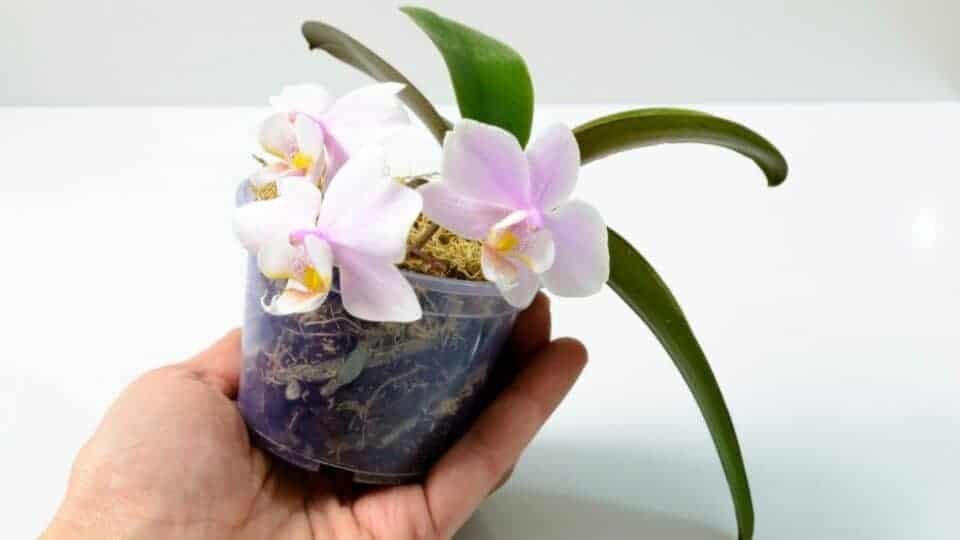Welcome to our comprehensive guide on how to take care of a mini orchid. Mini orchids, also known as miniature orchids, are delightful and delicate plants that can bring a touch of elegance to any space. Despite their small size, mini orchids require specific care to thrive and bloom beautifully.
In this article, we will provide you with all the essential information and tips you need to ensure your mini orchid stays healthy and vibrant.
1. Choosing the Right Mini Orchid
When selecting a mini orchid, it’s important to choose a healthy plant that suits your preferences. Here are some factors to consider:
- Look for a mini orchid with bright green leaves and no signs of discoloration or wilting.
- Inspect the roots to ensure they are firm, plump, and not mushy or dry.
- Check for any signs of pests or diseases, such as yellowing leaves or webbing.
- Consider the type of mini orchid you want, as different varieties have different care requirements.
2. Providing the Right Growing Conditions
Creating the ideal growing conditions for your mini orchid is crucial for its overall health and well-being. Here’s what you need to know:
- Light: Mini orchids thrive in bright, indirect light. Place your plant near a window with filtered sunlight or use artificial grow lights.
- Temperature: Mini orchids prefer temperatures between 60°F and 80°F (15°C and 27°C) during the day and slightly cooler temperatures at night.
- Humidity: These orchids require high humidity levels, ideally between 50% and 70%. You can increase humidity by placing the pot on a tray filled with water and pebbles or using a humidifier.
- Air Circulation: Good air circulation is essential to prevent fungal diseases. Avoid placing your mini orchid in stagnant air or near drafts.
3. Watering and Fertilizing
Proper watering and fertilizing are key to the health and blooming of your mini orchid. Follow these guidelines:
- Watering: Mini orchids should be watered when the top inch of the potting medium feels dry. Water thoroughly, allowing excess water to drain out completely. Avoid overwatering, as it can lead to root rot.
- Fertilizing: Use a balanced orchid fertilizer diluted to half strength. Apply it every two weeks during the growing season (spring and summer) and reduce frequency during the dormant period (fall and winter).
4. Repotting and Maintenance
Repotting and regular maintenance are essential for the long-term health of your mini orchid. Here’s what you need to know:
- Repotting: Mini orchids should be repotted every one to two years or when the potting medium starts to break down. Use a well-draining orchid potting mix and a pot that allows for proper drainage.
- Pruning: Remove any dead or yellowing leaves, as well as spent flowers, to promote new growth and prevent the spread of diseases.
- Support: Mini orchids may require support as they grow. Use stakes or clips to gently secure the stems and prevent them from bending or breaking.
5. Common Mini Orchid Care Mistakes to Avoid
While caring for mini orchids can be rewarding, it’s important to avoid common mistakes that can harm your plant. Here are some pitfalls to watch out for:
- Overwatering: Mini orchids are susceptible to root rot, so it’s crucial not to overwater them. Always check the moisture level of the potting medium before watering.
- Insufficient Light: Inadequate light can prevent mini orchids from blooming. Ensure your plant receives enough bright, indirect light to promote healthy growth and flowering.
- Using the Wrong Potting Medium: Mini orchids require a well-draining potting medium specifically formulated for orchids. Avoid using regular potting soil, as it retains too much moisture.
- Neglecting Air Circulation: Stagnant air can lead to fungal diseases in mini orchids. Ensure proper air circulation by placing your plant in a well-ventilated area.
FAQs on How to Take Care of a Mini Orchid
Q: How often should I water my mini orchid?
A: Water your mini orchid when the top inch of the potting medium feels dry. Avoid overwatering to prevent root rot.
Q: Can I keep my mini orchid in a bathroom with high humidity?
A: Bathrooms with high humidity can be suitable for mini orchids. However, ensure there is adequate light and proper air circulation to prevent fungal issues.
Q: Should I mist my mini orchid?
A: Misting is not necessary for mini orchids. It can increase the risk of fungal diseases. Focus on providing adequate humidity through other methods, such as using a humidifier or tray of water and pebbles.
Q: How long do mini orchids typically bloom?
A: Mini orchids can bloom for several weeks to several months, depending on the variety and care provided. With proper care, you can enjoy their beautiful flowers for an extended period.
Q: Can I place my mini orchid outdoors?
A: Mini orchids are sensitive to temperature and light fluctuations. It’s best to keep them indoors, where you can control the growing conditions more effectively.
Conclusion
Congratulations! You are now equipped with all the knowledge you need to take care of your mini orchid successfully. Remember to choose a healthy plant, provide the right growing conditions, water and fertilize appropriately, and perform regular maintenance. By avoiding common mistakes and following our tips, you can enjoy the beauty of your mini orchid for years to come.
Fun Fact: Did you know that orchids are one of the largest families of flowering plants, with over 28,000 recognized species? They come in various shapes, sizes, and colors, making them a favorite among plant enthusiasts worldwide.
Originally posted 2023-07-17 16:01:30.



